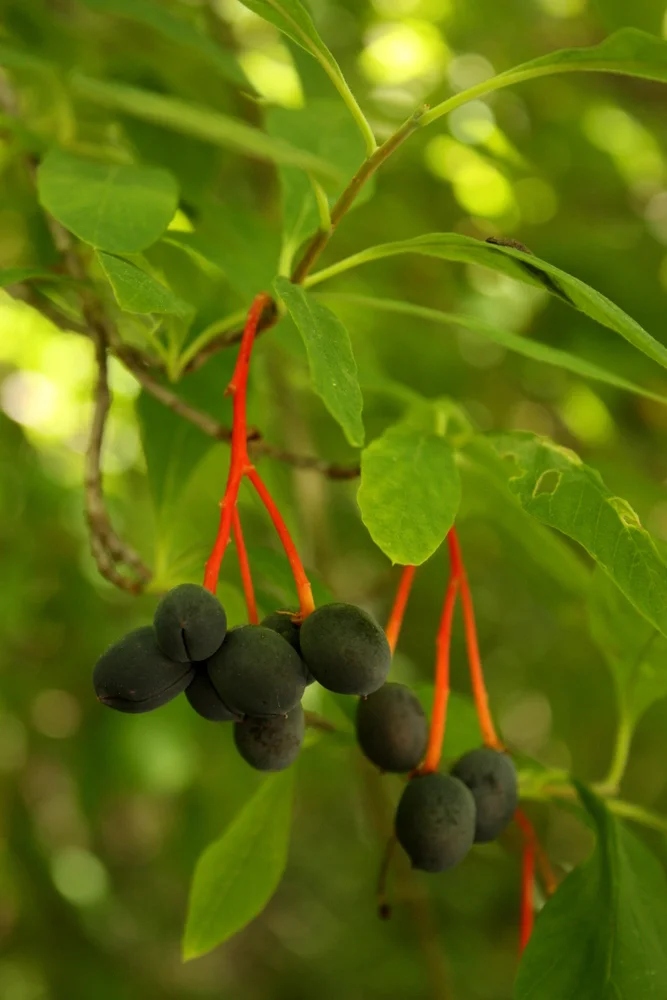
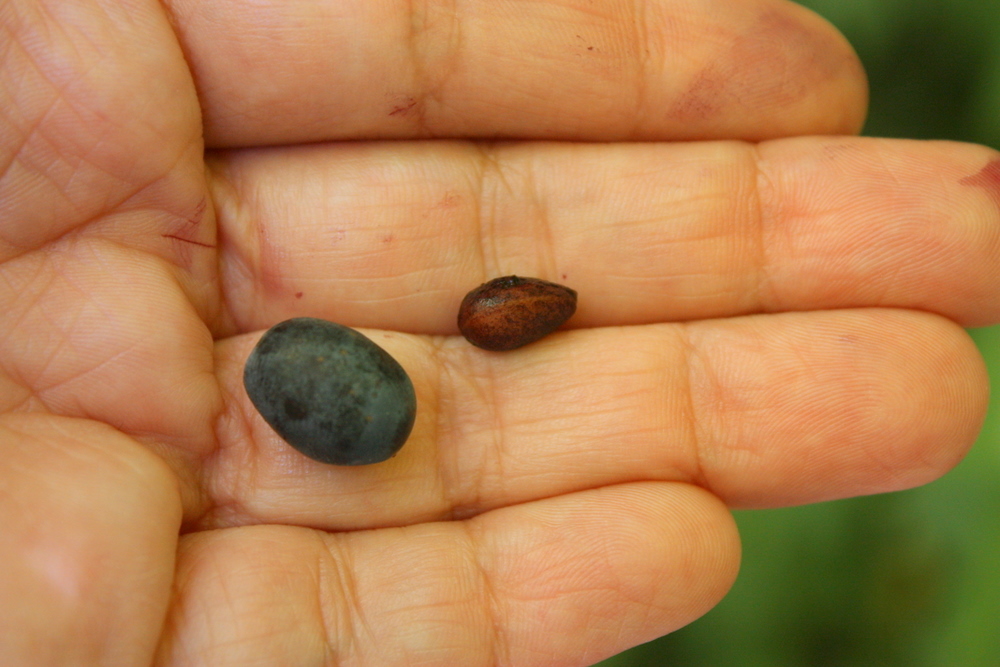
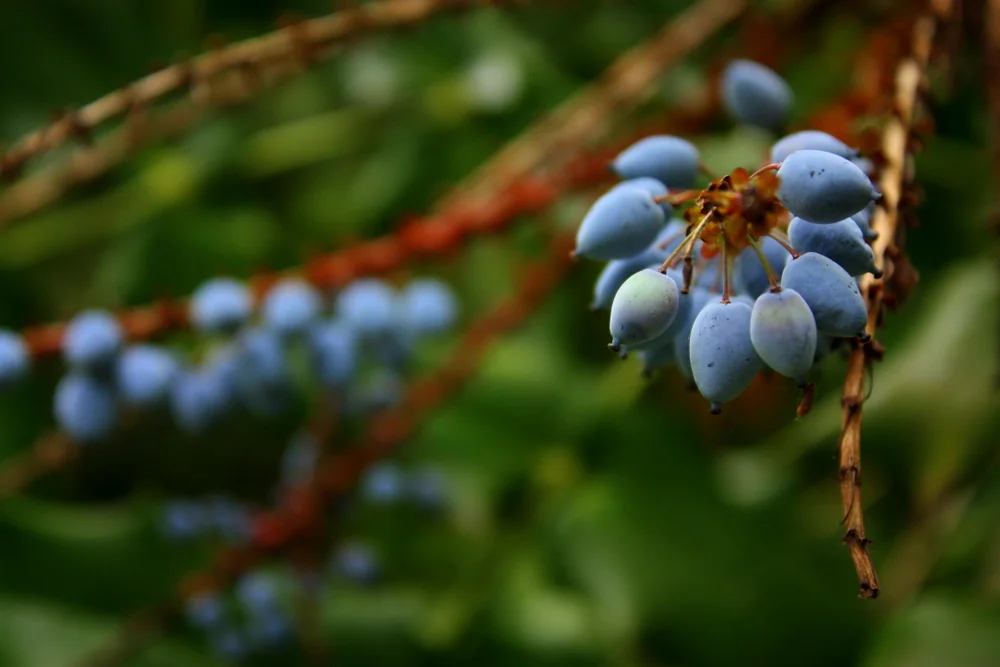

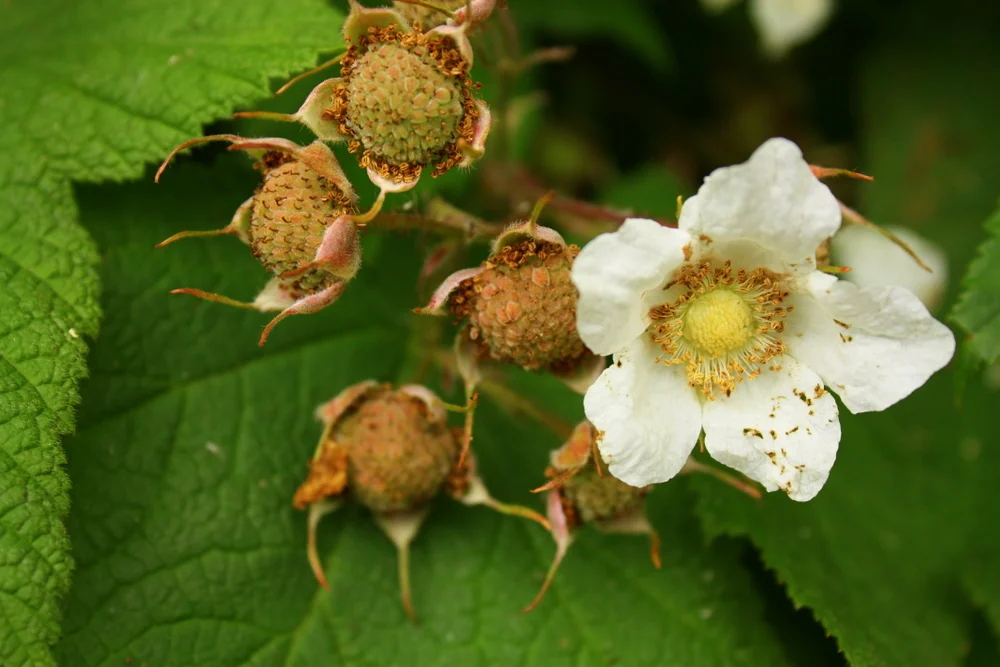




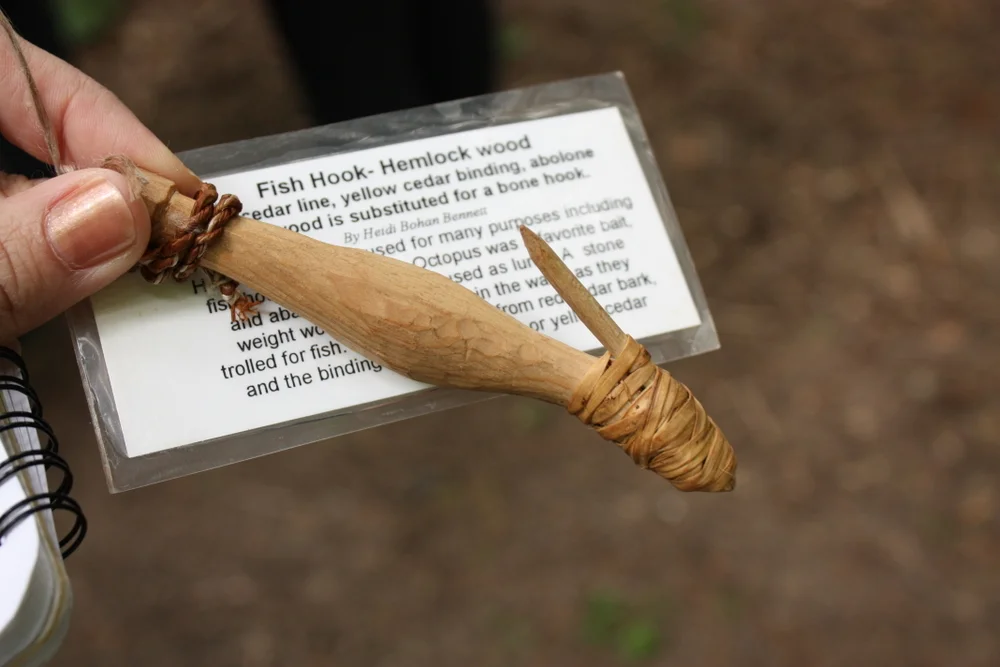
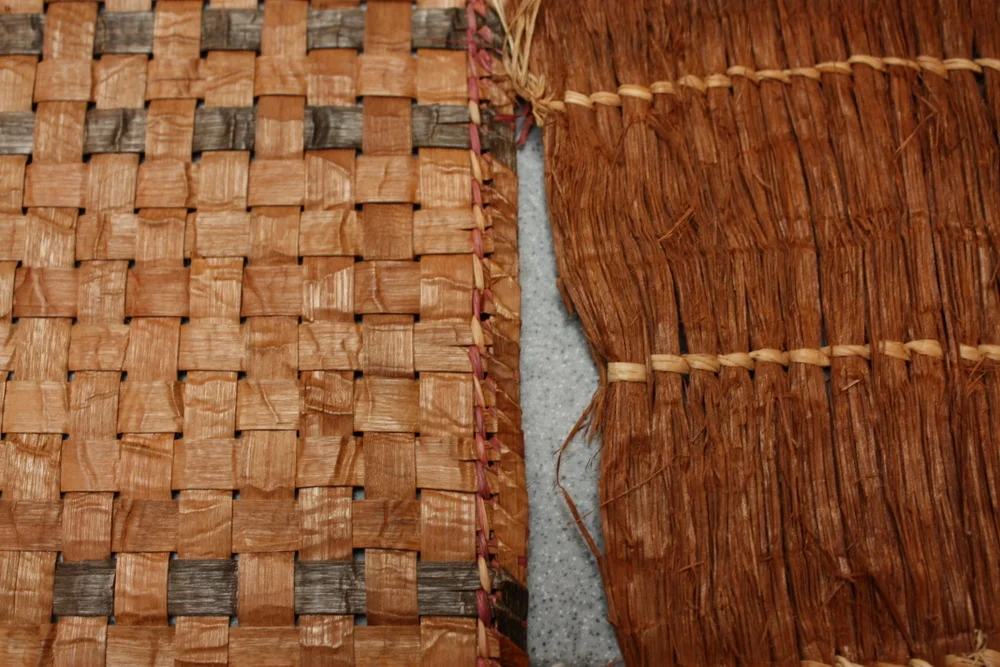
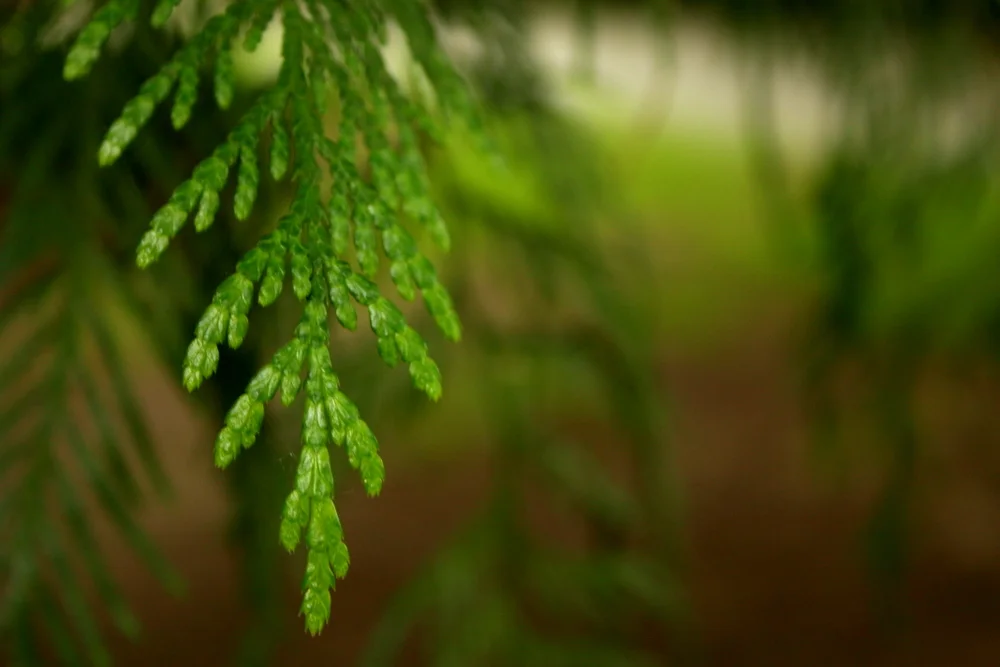
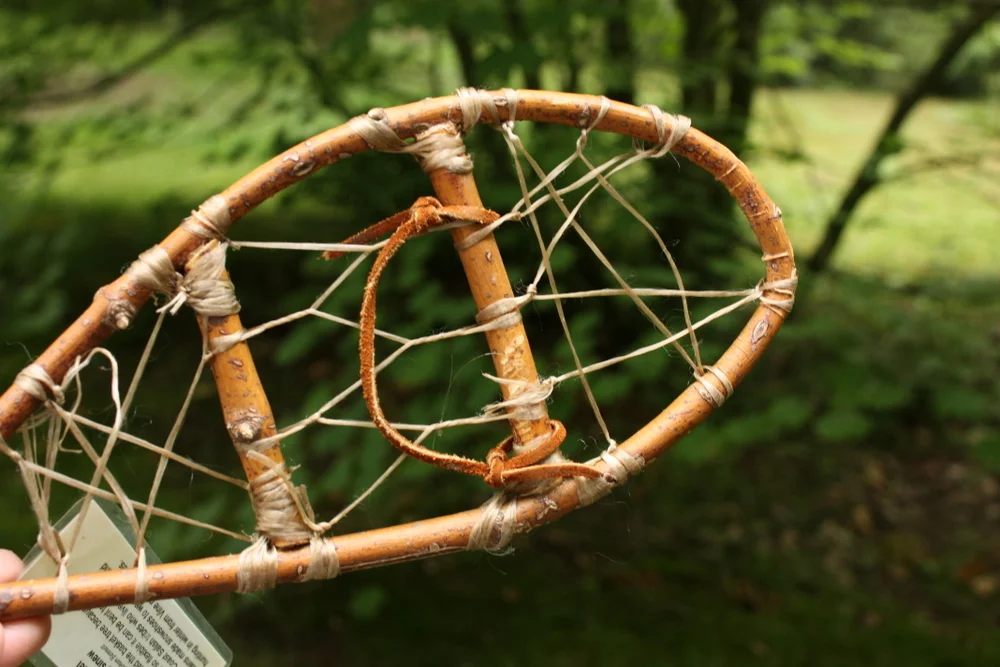


July 3, 2011: Free guided walk at the Washington Park Arboretum
Ripe Indian plums (Oemleria cerasiformis).

I saw and tasted the leaves of the Indian plum plant earlier this year on a walk with Langdon Cook, but at that time, it was too early for the fruit. This time, I got to taste the plum itself. The fruit has a sweet, mildly cucumber flavor like the leaves do. There's not a lot of flesh to eat; they're mainly pit. In addition to the fruit, the native people also used to chew the twigs as a "mild anesthetic and aphrodisiac."

There were also some ripe Oregon grapes (Mahonia aquifolium). These fruits were eaten by native people, often mixed with sweet salal berries to offset the tartness.

Speaking of salal (Gaultheria shallon), here are the leaves and flowers of that plant. Native folks ate the berries fresh and dried, often formed into cakes.

Red huckleberry (Vaccinium parvifolium). Eaten fresh, dried into cakes, used as fish bait. Per Pojar: "leaves and bark were used in decoction that was gargled for sore throats and inflamed gums."

Bark of three of our native trees. Left: Western Hemlock (Tsuga heterophylla). Bark igh tannin content, used as tanning agent and dye. Upper right: Western Redcedar (Thuja plicata). Bark and wood used for tons of stuff, housing, canoes, even diapers! Called the "tree of life." Lower right: Doulgas Fir (Pseudotsuga menziesii). Bark used as fuel, wood for spears, hooks, poles, more.

Snowshoe replica. Made from the flexible wood of the vine maple (acer circinatum). Vine maple was called the "basket tree" as those flexible and strong branches were used to make them.